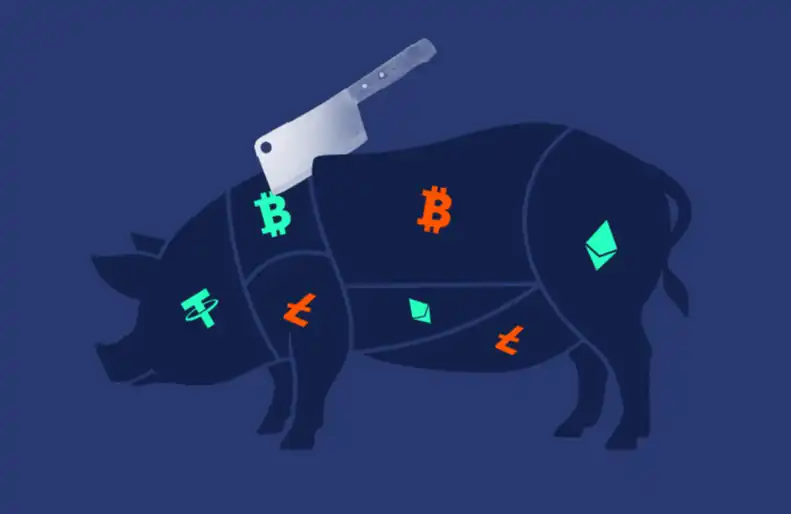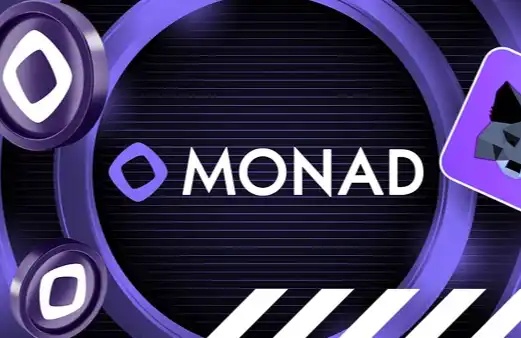Interpreting Solana's Latest Roadmap: How to Build an Internet Finance Market?
Original Article Title: "Decoding Solana's Latest Roadmap: How to Build an Internet Financial Market"
Original Article Author: 0xTodd, Partner at Nothing Research
Yesterday, Solana announced a new roadmap.
Essentially, as various chain improvements have entered deep waters, leading to a situation of somewhat jargon stacking, I tried to interpret Solana's new roadmap in a way that everyone can understand, along with my own analysis.
Firstly, in 2024, Solana underwent a major narrative shift, with Solana's goal now being to establish an "Internet Capital Market," whereas previously, Solana's goal was to build a high-performance blockchain.
An Internet Capital Market, as the name suggests, aims to create a borderless, 24/7 financial market where various assets—such as stocks, bonds, currencies, and real-world assets (RWA)—are all tokenized and seamlessly traded on-chain.
This concept serves as the overarching goal, so in order to achieve this goal, it needs to be broken down into tasks.
This Solana roadmap, to be precise, is the technical department's roadmap, aiming to help realize the concept of the "Internet Capital Market," hence you won't see Solana's business or compliance efforts.
You can think of it as Solana's technical roadmap.

Image Source: https://www.anza.xyz/blog/the-internet-capital-markets-roadmap
The Solana technical department includes not only Solana Labs' core developers but also several key players, such as:
1. Anza, at the elder brother level. This is a low-key Solana development company founded by former Solana Labs team members. Personally, I think its role is similar to the relationship between ConsenSys/Ethereum or Blockstream/Bitcoin.
2. Jito, Second Brother level. This is the Solana version of Lido, but it has more power than Lido because Jito also controls almost all MEV on Solana.
3. Multicoin, at least at the Third Brother level. Although it is a capital entity, it has a significant say in the technical field due to its holdings of SOL and SOL ecosystem projects.
4. DoubleZero, at the Junior level, focuses on speeding up the network.
5. Drift, also at the Junior level, is a perpetual contract but is also involved in some of Solana's feature developments.
With the official Solana Labs and the three major powerhouses, along with the two junior warlords, this roadmap is formed by a six-member team, essentially acting as the true Solana Technical Reform Committee.
Next, let's see what efforts the Solana technical team needs to make to achieve the Internet Capital Market.
The Internet Capital Market is more of a slogan because it doesn't really say how things should be done.
Therefore, to facilitate developers coming together, the technical team has translated the entire slogan into technical language, which is "Application-Controlled Execution (ACE)."
This is where it starts to get complicated. What exactly is this tongue-twisting Application-Controlled Execution (ACE)?
It means that Solana believes that an Internet financial market (especially on par with Web2) must meet one condition, which is that financial applications must have [millisecond-level control over their own transaction order].
Note: It requires both ordering power and millisecond-level control, all under the application's own authority.
Therefore, to achieve Application-Controlled Execution (ACE), Solana's technology is still lacking many things. What exactly is missing? Please refer to the roadmap:
· Short-Term Goals (1-3 months): Be more friendly to order books, suppress malicious MEV extractors, and reduce transaction latency.
· Mid-term Goal (3-9 months): Reduce latency through dedicated fiber optic network; overhaul the Solana consensus algorithm to significantly shorten transaction finality time; decrease transaction latency.
· Long-term Goal (9-30 months): Evolve the Solana consensus algorithm from a single leader to multiple leaders to enhance the system's resistance to extreme risks and censorship, granting applications greater ordering power.
Next, let's discuss how to achieve the short, mid, and long-term goals respectively.
Short-term Goal (1-3 months): Be more friendly to the order book, suppress malicious MEV extractors, and reduce transaction latency.
Jito and Anza are in charge.
First is the order book. Solana really loves order books. I remember back in the SBF era, Solana wanted to promote the order book model for DEX. Today, Jito and
Drift, among others, are developing a tool called BAM, a new way of constructing transactions. I won't go into the specifics here.

Image Source: bam.dev
Here, what you need to know is that through this method, the order book can operate more smoothly without relying on traditional DEX models like Uniswap, potentially creating an order book comparable to a CEX. After all, how can a single chain serve as an internet financial market without an order book?
Suppressing malicious MEV extractors is also part of Jito's routine. Of course, this is also part of strengthening Jito's power further. All blocks must pass through Jito and the entire BAM to be built, akin to the Chief Grand Secretary of the Ming Dynasty.
Anza, on the other hand, has contributed a new TPU client to reduce transaction send latency.
Mid-term Goal (3-9 months): Reduce latency through a dedicated fiber optic network; overhaul the Solana consensus algorithm to significantly shorten transaction finality time; decrease transaction latency.
In charge are: DoubleZero and Anza.
Since everyone knows that the primary bottleneck of Solana nodes is insufficient bandwidth, the project DoubleZero mentioned earlier aims to increase the available bandwidth for ordinary Solana validators by establishing a dedicated fiber optic network.
Of course, now more than DoubleZero is focusing on addressing the bandwidth issue, such as protocols like Optimum. However, while DoubleZero essentially sells hardware, Optimum essentially sells a better algorithm.
Furthermore, we should emphasize the issue with Solana's consensus algorithm, but due to space constraints, let's keep it brief.
The Solana consensus algorithm, as we all know, is Proof of History (PoH) + Tower BFT.
The essence of this consensus is to first create an internal clock through Proof of History, then to select a leader each time based on time. The leader is responsible for block production, while other nodes only participate in voting, known as a single leader approach.
The benefit of a single leader is speed, but the downside is centralization, which is why Solana has experienced several downtimes.
I believe everyone who has worked in a company knows the difference in efficiency between having one leader and having a leadership team, so I won't elaborate on that here.
Of course, Solana itself believes that the main contradiction of the single leader approach now is that the finalization time is not fast enough.
Currently, Solana's finalization process takes 12.8 seconds, while Solana's competitors, such as Sui, only need 0.5 seconds.
The so-called finalization has been discussed many times before. Before finalization, there is *theoretical* possibility of blockchain rollback; after finalization, even if God comes down, nothing can be changed, which is the essence of an immutable blockchain.
A more intuitive example is the time you wait for several blocks to be confirmed when depositing to an exchange. This is the exchange's precaution against blockchain rollbacks.
Although in 99.9% of cases, blockchains do not crash due to insufficient finalization time, there have been cases in history where individuals exploited this, such as using ETC or BTC forked coins to deceive exchanges.
However, do you remember that Solana aims to serve the internet capital market—the financial market has very high requirements for finality, intolerant of any mistakes. Hence, 12.8 seconds is not sufficient, prompting Solana to embark on developing a new consensus mechanism.
It's important to note that the consensus mechanism is the cornerstone and soul of a blockchain. This crucial development task has been entrusted to Anza, which explains why I refer to Anza as the big brother of Solana's technical team.
Although Anza is an outlier, it is definitely part of the mainstream.

Image Source: danbaileyphoto
Solana's new consensus mechanism is called Alpenglow, meaning "the glow of the Alps," symbolizing the protocol's Swiss origin.
This Alpenglow consensus mechanism can be summarized with three key features:
(1) Finality reduced to 150 milliseconds (3x faster than competitors)
(2) No more voting (off-chain voting, saves small validators money)
(3) More graceful (eliminates technical debt, prepares for multi-leadership)
Under this Alpenglow consensus of the Alps, it still operates with a single leader, but:
1. Propagation Layer: Introduces relay nodes to help forward transactions, significantly reducing latency.
2. Voting Layer: Although fault tolerance has decreased from 33% to 20%, sacrificing some security, the finalization time has been dramatically shortened. Additionally, cryptographic guarantees ensure voting is conducted off-chain.

New propagation layer diagram. Image Source: Helius

New voting layer diagram. Image Source: Helius
This approach aims to shorten the final confirmation time to 150 milliseconds.
Finally, the long-term goal (9-30 months): transition Solana's consensus algorithm from a single leader to multiple leaders to increase the system's resistance to extreme risks and censorship, granting applications greater ordering power.
This is also understandable because the goal is to establish a free "Internet Capital Market," so it assumes the worst-case scenario.
What is this worst-case scenario? For example, a single leader wanting to censor transactions or dictate transaction order (instead of letting applications order themselves).
Why is Solana so persistent in allowing financial applications to prioritize themselves? Let me give you an example, and you'll understand. Imagine that you are currently trading stocks through a brokerage firm. Unexpectedly, China Telecom, taking advantage of its network base station, front-runs your trade. Can you tolerate that? Right. MEV is actually very unreasonable, but everyone is just used to it. How can the power of chains and nodes dominate over applications?
Therefore, in order to avoid this worst-case scenario, Solana must introduce a multi-leader model in the future. In this way, if one leader node engages in malicious behavior, including but not limited to, censoring transactions such as those from addresses sanctioned by the United States; reordering transactions such as personally performing front-running, etc., other leaders must be able to counteract it.

Multi-Leader Mechanism Concept Diagram. Image Source: Anza
This article is relatively short because there is currently no clear path to implement it; it is still in the realm of idealistic discussions.
Therefore, when you look at the short-medium-long-term technical goals of this project, from the simplest such as block sorting, to later complex improvements in consensus mechanisms, to ultimately adding the extremely challenging multi-leader model, fundamentally, it is all about gradual progression, serving the ultimate goal of the "Internet Capital Market."
Lastly, although Solana's technical roadmap is filled with a plethora of jargon and abbreviations, after analysis, its technical roadmap is undoubtedly effective and feasible. We also look forward to the day when traditional financial applications truly take root and thrive on Solana!
This article is a contributed submission and does not represent the views of BlockBeats.
Welcome to join the official BlockBeats community:
Telegram Subscription Group: https://t.me/theblockbeats
Telegram Discussion Group: https://t.me/BlockBeats_App
Official Twitter Account: https://twitter.com/BlockBeatsAsia


 Forum
Forum Finance
Finance
 Specials
Specials
 On-chain Eco
On-chain Eco
 Entry
Entry
 Podcasts
Podcasts
 Activities
Activities
 OPRR
OPRR









